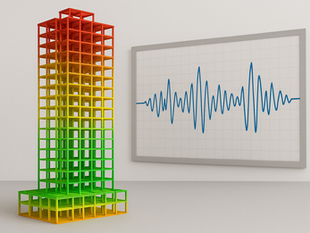
From Monument to Material Bank: A New Way to Think About Towers
1
7
0
For decades, tall buildings have been symbols of power, progress and permanence. They pierce the sky, define skylines and often outlive their original purpose. But what if we started thinking about towers not just as permanent monuments, but as material banks? What if we designed them not to last forever, but to change gracefully, to give back and to become resources for the future?
At ALD Architecture, we believe in this shift and support approaches that rethink vertical design with a circular mindset. We would be excited to contribute to future projects aligned with these principles.

Buildings as Repositories, Not Relics
The traditional high-rise is a monolith, made to stand for 50 or 100 years and when it no longer serves its purpose, it's often demolished at great cost. The materials are lost, the structure is wasted and the environmental impact is enormous.
But if we imagine buildings as temporary repositories of valuable materials, we unlock a new kind of logic:
One that asks how will this be taken apart?, not just how will this be built?
One that embraces change as part of the design intent.
Designing for Disassembly
At ALD Architecture, we believe that true sustainability begins at the drawing board. Designing for disassembly doesn’t mean compromising beauty or structural performance, it means layering intelligence into the way things fit together.
Key strategies:
Dry connections and mechanical fixings instead of permanent adhesives or welds
Modular systems that can be replaced or upgraded individually
Material layers that are accessible, traceable and easy to separate
Disassembly isn’t about making something weak, it’s about designing with future flexibility in mind.
BIM and the Power of the Digital Passport
Technology plays a critical role in making this possible. Through BIM-linked material passports, we can tag every element of a building with data:
What it’s made of
Where it came from
How it’s assembled
How it can be reused
This turns the building into a digital inventory, ready for recovery and reuse, even decades from now.
Just as we track energy performance, we can track material value over time. Towers become not just buildings, but assets in motion.
Why It Matters: Circularity as a Design Principle
This approach is not about technical gimmicks. It’s about rethinking the DNA of architecture. Because the question is no longer just “How tall can we build?” It’s “How wisely can we build and unbuild for the next generation?”
When towers are designed as material banks:
They reduce demolition waste
They store resources for future reuse
They allow adaptability instead of rigidity
And most importantly, they signal a cultural shift in how we build
Final Thoughts
Architecture should evolve with time, not fight against it. Designing tall buildings as material banks invites us to think beyond the skyline, into a future where resources are respected and buildings are born with their endings in mind.
At ALD Architecture, we welcome opportunities to engage in visionary projects that align with this sustainable and forward-thinking philosophy.






